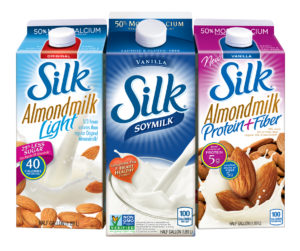Does your child like to drink coke by the pack? Is playing on a computer his or her idea of exercise? You’re not alone! Join millions of other parents who are in the same situation. If a French-fry is the only vegetable your kid allows on the plate you may have a problem. So, if these preferences sound familiar, your child may be consuming the typical American diet – a diet high in sugar, caffeine, and fat and the now familiar pattern of lack of exercise among children.
Today’s children are much less physically fit than previous generations, and in the United States, the percentage of obese children has more than doubled since 1976. Poor food choices, lack of exercise, computer games, and TV, as well as other distractions are causing severe obesity and nutritional problems in our children. The consumption of sugar of all kinds by kids, from candy to soda, to donuts, has witnessed significant increases in juvenile diabetes. However, there are healthy ways to reduce the caffeine, sugar, and fat in your child’s diet.
Advertisement: Silk (click on photo for more info)

The Truth About Caffeine, Sugar, and Fat
Sometimes, the truth about food, especially what children eat, is difficult to find. Television and magazines tantalize consumers with images of delicious, sugary foods. Your child’s doctor may tell you that your child’s diet is too high in fat; too high in sugar; or that he or she doesn’t exercise enough. But what’s the truth?
There’s a very popular ingredient in an ever-increasing fluid we drink as adults. Caffeine in coffee! Do you want your children needing a morning buzz? Caffeine is totally lacking in nutritional value and does not add taste, texture, or color to a soft drink. Caffeine affects children and adults similarly. However, children are much smaller in size and typically get overstimulated from caffeine. A typical cup of coffee contains 85 milligrams while the average soda contains about 30-35 milligrams of caffeine. While your children may not be drinking coffee, there are quite a few other sources where they get it from without realizing it.
As a stimulant, caffeine can interfere with sleep and may affect children who are sensitive to it, making them restless at night and very tired the next morning. Does this sound familiar? You wake up your child to get them ready for school, about twenty minutes later you go in the bedroom and they’re fast asleep. This can and often is the result of over stimulation due to both caffeine and sugar. Also, because caffeine is a diuretic – causes the body to eliminate water – it can contribute to dehydration. Caffeine is an especially poor choice in hot weather, when children need to replace water lost through perspiration. And, children who drink lots of caffeinated beverages may miss getting the calcium they need from milk to build strong bones and teeth. The body requires a phosphorus/calcium ratio to function properly. The typical dark cola is loaded with phosphoric acid, which will overload the body with phosphorus and cause calcium loss from bones to help balance the required ratio. This causes weakening of bones and can be extremely detrimental in old age if the child continues this nutritional habit.
Advertisement: Don Tolman International (click on photo for more info)

The U.S. Department of Agriculture (USDA) suggests a maximum of 6 tablespoons of sugar per day for someone consuming 1,600 calories (an amount typical for children 5 years of age). One 12-ounce soft drink (the average can) contains about 3 tablespoons of sugar, so in one drink, your child is getting almost half the day’s recommended amount of sugar, not to mention the affect high sugar drinks and food have on teeth and the cavities that generally prevail with a nutritional diet high in sugar. It’s a proven fact that children and even adults develop more cavities than those who do not consume as much.
The effects of sugar are sometimes mis-perceived. Sugar does promote tooth decay, but studies show no link between hyperactivity and sugar. When 5-year-olds are running around at a birthday party after eating cake and ice cream, parents joke that they’re “high” from the sugar. The reality is they’re just being 5-year-olds, excited in the moment with friends. But, a combination of both sugar and caffeine, for example from soda, will have this effect on children.
Although sugar does not cause hyperactivity, it does generally contribute to excess weight gain. Foods that are high in sugar also tend to be high in calories and fat and low in other valuable nutrients. As a result, a high-sugar diet is often linked with obesity.
There’s an important link between calories, sugar, and fat. A calorie is a unit that measures heat, or energy. So, calories describe the amount of energy that different foods supply. The amount of heat, measured in calories, is that food’s caloric content. Before you eat, the energy contained in the food is trapped in the food. The energy is released when your digestive system breaks down the food. Because sugary and fatty foods often are high in calories, it takes the body longer to use up those calories. As a result, excess calories from sugary and fat foods equals excess pounds on a person’s body, generally.
On the fat front, the American Dietetic Association (ADA) recommends that after age 2, children should consume no more than 30% of daily calories from fat, which is relatively the same guideline for adults. Infants and toddlers need more fat as they’re developing. Excess fat in a child’s diet may lead to weight gain. Obese children have a higher incidence of depression and orthopedic problems. Kids who carry excess weight into adulthood have greater risk of heart attacks, high blood pressure, and early death.
Kids who fill up on sugar, fat, and caffeine don’t get the nutrients they need from healthy sources, putting them at risk for malnutrition. The average teen consumes about twice as much sugar as the USDA recommends and doesn’t get the recommended amounts of fruit and low-fat milk. The list seems almost endless.
Advertisement: NordicTrack (click on photo for more info)

In addition to diet, kids must exercise more. This can be done by getting them involved in school sports, time in the park or playground, taking them with you to the gym, going on a family hike, and many other ways. But, most of all, it will likely require much time and effort from you, the parent, if you want to achieve success! Be willing to go the extra mile to help them to be healthy. Remember, an unhealthy person – child or adult – is more prone to repeated visits to the doctor. For some, this may even cause financial problems. If you’ll remember that about 93 percent of all our ailments are due to both improper nutrition and lack of physical activity, it may be the catalyst you need to prod you along.
What Can You Do?
Just as with nutrition, weight control, and exercise problems that many adults face, you should strive to help your kids eat healthier and help them to get adequate exercise. If you help your children get the exercise they need, you will also get most if not all the exercise you need. The best thing you can do is be an example for them in exercise and nutrition. Doing this will help you and make what many consider a choir to be a pleasure.
Walk as a family to share time together and to also increase your metabolism so that you can burn some extra calories along with them. There are many articles on this website that will guide you in the right direction. However, you must develop a plan and stick with it. Work on you and your children’s nutrition and exercise. These are the two keys to being your healthiest.







